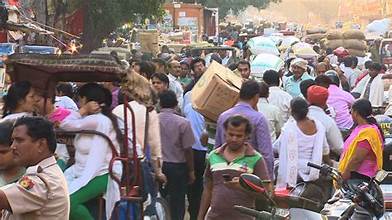As we delve into the projected population trends for India in the year 2050, it becomes evident that religious demographics will play a significant role. Analyzing the anticipated shifts in the populations of Hindus, Muslims, and Christians unveils intriguing insights into the country’s socio-cultural landscape.
The Growth Trajectory of India’s Population
India, renowned for its rich cultural tapestry and diverse religious practices, stands as one of the most populous countries globally. With a current population exceeding 1.3 billion, projections indicate that India will continue to witness population growth in the coming decades.
Hindu Population Dynamics
Hinduism, the predominant religion in India, has historically constituted the majority of the population. However, demographic analyses suggest a nuanced picture of Hindu population growth. While Hindus are expected to maintain their majority status, the rate of growth may witness a slowdown compared to previous decades. Factors such as declining fertility rates and socio-economic changes contribute to this trend.
The Rise of the Muslim Population
In contrast, the Muslim population in India is projected to experience steady growth, albeit at a pace faster than the Hindu population. This trend is primarily driven by comparatively higher fertility rates among Muslim communities. Additionally, factors such as social dynamics and regional variations influence the trajectory of Muslim population growth in different parts of the country.
Christian Population Trends
Christianity, although a minority religion in India, continues to demonstrate a stable growth pattern. While the absolute numbers may not rival those of Hinduism or Islam, the Christian population is expected to witness moderate growth across various regions. Factors such as conversions, interfaith marriages, and migration contribute to the evolving dynamics of the Christian demographic in India.
Socio-Economic Implications
The changing religious demographics in India carry significant socio-economic implications. As the population continues to grow and diversify, policymakers, economists, and social scientists must address various challenges and opportunities. Issues related to healthcare, education, employment, and social cohesion require nuanced approaches that consider the religious and cultural dimensions of India’s population dynamics.
Challenges and Opportunities
While population growth presents challenges such as strain on resources and infrastructure, it also offers opportunities for innovation, development, and cultural exchange. Harnessing the demographic dividend through skill development, education, and inclusive policies is essential for India’s sustainable growth and prosperity.
Disclaimer : इस न्यूज़ पोर्टल को बेहतर बनाने में सहायता करें और किसी खबर या अंश मे कोई गलती हो या सूचना / तथ्य में कोई कमी हो अथवा कोई कॉपीराइट आपत्ति हो तो वह [email protected] पर सूचित करें। साथ ही साथ पूरी जानकारी तथ्य के साथ दें। जिससे आलेख को सही किया जा सके या हटाया जा सके ।














